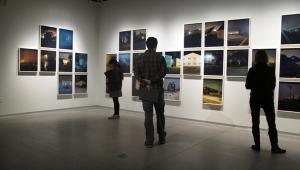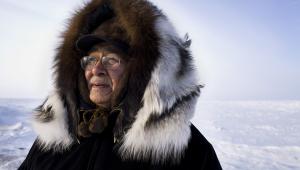Legal And Business Practices For Digital Photography; On Guidelines, Licensing, And More From ASMP’s Judy Herrmann
As digital technology grows it's critical for photographers to enlighten themselves about the most essential business and technical practices. The legalities associated with digital capture are quite different from film and need to be addressed in the everyday business of digital photo shoots. The work of the American Society of Media Photographers (ASMP), Universal Photographic Digital Imaging Guidelines (UPDIG), and Picture Licensing Universal System (PLUS) allow protection of intellectual property and set guidelines that raise the standards of the profession. Established photographers have risen to the task and actively help to spread awareness about the value of trade organizations in the industry. To explore this more we talked with Judy Herrmann, current ASMP president.
Terre Peck Shoe |
|
 |
|
|
Since 1989, Herrmann of Herrmann + Starke (www.HSstudio.com)
has specialized in producing still life and lifestyle photography primarily
for advertising. Her work has won acclaim from Lürzer's Archive,
Graphis, HOW, PDN, and Pix and has been featured in many publications. As an
established expert on digital photography, she has written numerous articles
and taught over 60 seminars targeted toward photographers. Herrmann's
current seminar offerings, "Breaking into the Biz" and "Taking
Control of Your Career," focus on helping students, emergent photographers,
and established professionals build careers that fulfill their goals. She also
consults individuals on career planning and development. Herrmann joined the
national board of the ASMP in 2002 and currently serves as president for the
6000 member international trade association.
Shutterbug: It appears that more clients are rejecting professional
services and completing their own digital photography projects. How has this
changed the industry?
Judy Herrmann: We first noticed this trend in the late '90s
when catalog design firms began building product photography studios in-house.
Nearly a decade later, the practice has become increasingly widespread. Much
of the bread-and-butter work that we cut our teeth on as emerging photographers
is done in-house now.
Evening Dresses |
|
 |
|
|
SB: How does a photographer compete with the client's
in-house photography?
JH: It's very important for photographers to focus on
providing value. It's not about the gear--many of our clients own
the same cameras we do--it's about visual communication skills and
creative problem-solving abilities. By the time a client hires a professional,
they're looking for a level of expertise and skill that goes beyond what
they can do themselves. That means that photographers must have significantly
stronger visual and technical skills than their clients. They also need extremely
good communication skills so the buyer can quickly and easily understand the
value that they bring to the table.
SB: How has the in-house trend changed your photographic marketing?
JH: Our studio has always focused on providing clients with
cutting-edge imagery, technical proficiency, and an extremely high level of
service. We use our visual, communication, and technical skills to differentiate
ourselves from our competition and to provide clients with images and solutions
that maximize our value. We push ourselves very hard both creatively and technically
to ensure that we have the skills to offer our clients the best possible solution
for the problem they're trying to solve. We market a visual style and
we reinvent it every 3-5 years, but we're not locked into that style.
If a different approach will communicate their message more effectively, we're
flexible--our skills give us the versatility to work in any visual language.
Skirt |
|
 |
|
|
SB: Once your projects are complete, how do you present your
clients with digital billing concepts such as capture fees, retouching and postproduction
charges in a way that is easy for them to interpret?
JH: The way we structure the language depends on the nature
of the project. Sometimes, it makes sense to line item each aspect of the postproduction.
Other times, we'll present multiple activities as a single line item.
Our studio has been providing clients with digital files since '94 and
we have always charged for digital postproduction services. It's simply
a stated policy and, truthfully, it's never really been questioned.
The important thing to recognize is that digital postproduction adds both cost
and value. To do it well, the photographer has to make a significant investment
in equipment and training, not to mention the time actually spent managing and
optimizing the files for the job at hand. Clients used to have to pay for scans
and multiple rounds of proofs. Even then, the color fidelity rarely came close
to the original transparency. A photographer who understands pre-press and controls
the optimization of their images will deliver files that are true to their creative
vision; a vision informed by the client's needs and refined over the course
of the project. That's the best possible scenario for all involved.
Antonella |
|
 |
|
|
- Log in or register to post comments
















































